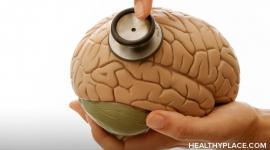What is Type 2 Diabetes? Symptoms, Causes, Treatment

What is type 2 diabetes? It is by far the most common form of diabetes, accounting for about 90-95 percent of all cases of this serious disease ("What Are the Types of Diabetes?"). Here’s a look at what type 2 diabetes is.
Type 2 Diabetes Definition
Type 2 diabetes is a disease involving metabolism. When you eat carbohydrates, your body breaks them down into a sugar called glucose. Cells need glucose for energy, but the only way the glucose can get out of the bloodstream and into the cells is with the help of insulin. Insulin is made in an organ called the pancreas and released into the body where it leads glucose into cells or, when there’s extra glucose, into the liver for storage ("What Is Diabetes?").
This process goes awry in type 2 diabetes. The body either doesn’t make enough insulin or it produces enough insulin but can’t use it properly. This is called insulin resistance and is a simple type 2 diabetes definition.
In insulin resistance, the body resists insulin’s effort to move glucose into the body’s cells. Blood sugar climbs too high (a condition called hyperglycemia), while cells’ energy level is too low. This poses both short- and long-term health risks including problems with the heart, blood vessels, nerves, eyes, and kidneys.
How do you know if you have type 2 diabetes? Certain type 2 diabetes symptoms can alert you to the condition.
Type 2 Diabetes Symptoms
Type 2 diabetes is a progressive disease, which means it worsens over time. Initially, someone might not have any signs or symptoms ("What Is Prediabetes? Definition and Symptoms"). In fact, this condition is often diagnosed accidentally, during a doctor visit for something else entirely.
When type 2 diabetes symptoms do begin to appear, they can include any of the following:
- Increased hunger
- Increased thirst
- Frequent urination
- Unexplained fatigue (feeling very tired despite sleeping well)
- Dry, itchy skin
- Dry mouth
- Numbness or tingling of the hands and feet
- Blurry vision
- Weakness
- Flu-like feeling
- Unexplained weight loss or weight gain
- Sores that are slow to heal
- Frequent infections
- Gum problems
- Erectile dysfunction
- Darkening of the skin, especially around the neck or armpits (a condition called acanthosis)
You don’t have to have all these symptoms to have type 2 diabetes, so if you notice any of them and have diabetes risk factors, a visit with your primary care physician might be in order.
Cause of Type 2 Diabetes, Risk Factors
Scientists are still researching the exact cause of type 2 diabetes ("What Causes Diabetes?"). The cause of type 2 diabetes remains elusive, but researchers have identified consistent risk factors. These are
- Genetics; if you have a parent or sibling with type 2 diabetes, your chances of developing it are higher
- Obesity or being overweight; while type 2 can occur in people who aren’t overweight, 75% of people with this form of diabetes are or have been obese with a body mass index (BMI) of 30 or higher (American Diabetes Association, 2011).
- Body shape; people who are apple-shaped, with a concentration of body fat in the abdomen, are at an increased risk of diabetes
- A sedentary lifestyle
- Poor nutrition
- Race; African Americans, Latinos/as, American Indians, Asian Americans, and Pacific Islanders are at a higher risk than other ethnic groups for type 2 diabetes
- Age; type 2 can occur at any age, but the risk increases after age 45
The connection between type 2 diabetes and being overweight involves body fat and insulin. Fatty tissue interferes in the body’s ability to efficiently use insulin, causing the insulin resistance that is type 2 diabetes.
The fact that the risk factors and causes of type 2 diabetes have strong lifestyle components is good news. It means that prevention and treatment are possible.
Type 2 Diabetes Treatment; Type 2 Diabetes Prevention
There is no cure for diabetes. Type 2 diabetes can, however, be prevented and treated. Both type 2 diabetes treatment and type 2 diabetes prevention involve lifestyle changes.
Type 2 diabetes prevention involves knowing the risk factors and consulting your doctor for testing every two or three years if you are at risk. Making lifestyle changes that involve exercise, nutrition, and weight loss can prevent type 2 diabetes from developing.
If you or a loved one has already been diagnosed, type 2 diabetes treatment is possible. Comprehensive treatment involves managing blood glucose levels. You can accomplish this by:
- Monitoring your blood sugar levels according to your doctor’s direction
- Eating healthy foods and avoiding processed foods, fast food, and sugary drinks
- Controlling weight
- Increasing your physical activity
- Working with your healthcare team (made up of different healthcare specialists who treat diabetes-related problems)
- Taking medication, including insulin, if prescribed (medication isn’t always necessary in type 2 diabetes)
Type 2 diabetes is a serious disease involving problems with insulin and high blood glucose levels, but with proper treatment, you can live well and enjoy your life.
APA Reference
Peterson, T.
(2022, January 4). What is Type 2 Diabetes? Symptoms, Causes, Treatment, HealthyPlace. Retrieved
on 2025, April 18 from https://www.healthyplace.com/diabetes/main/what-is-type-2-diabetes-symptoms-causes-treatment


